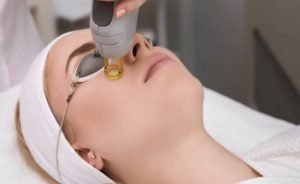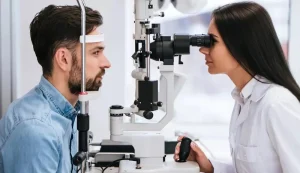
According to recent studies, vestibular rehabilitation can be pretty effective for improving symptoms related to a lot of vestibular disorders (inner ear or balance). A lot of individuals with this type of disease usually experience imbalance, visual disturbance, dizziness, or vertigo.
These are issues that this kind of rehabilitation is trying to address. Other health problems can also arise that are considered secondary to VB disorders like vomiting and nausea, reduced ability to concentrate or focus, as well as severe fatigue. Symptoms because of vestibular disorders can reduce the value of life, as well as impact every aspect of people’s daily lives. It also contributes to emotional issues like depression and anxiety.
Not only that, one of the consequences people with vestibular disorder experience is that symptoms usually cause patients to adopt a sedentary and inactive lifestyle to avoid worsening or bringing on imbalance and dizziness. Because of this, decreased muscle flexibility and strength, increased stiffness in the joints, and reduced stamina may occur. Treatment methods used in therapy can also be beneficial for secondary health issues.
Visit https://www.webmd.com/brain/vestibular-disorders-facts to know more about this disorder.
What is vestibular therapy?
Vestibular rehab or VB rehab therapy is a specialized type of therapy intended to help alleviate the primary, as well as secondary health issues caused by vestibular disorders. This program is exercise-based and designed to help reduce dizziness, vertigo, imbalance and falls, or gaze instability.
For most individuals with this kind of disorder, the deficit can be permanent since the amount of restoration of function is pretty small. But after VB system damage, patients can feel a lot better, and function is expected to return through compensation. It happens because our brain learns to use our other systems like somatosensory and vision to substitute for the inadequate system.
The health of specific parts of the body’s nervous system (somatosensory sensations, visual, cerebellum, and brain stem) is vital when it comes to determining the extent of recovery that a body can gain through compensation. For a lot of individuals, compensation happens naturally as time goes by.
Still, for people whose symptoms don’t reduce, and for people who continue to have issues returning to their daily activities, vestibular therapy can help with the recovery by promoting compensation. It is achieved by customizing different exercises to help address every person’s specific health issue.

Therefore, a strict and comprehensive clinical exam is needed to help identify issues related to this type of disorder before a specialized exercise program can be designed. Depending on the problem or problems identified, certain methods of exercise can be prescribed: balance training, gaze stabilization, and habituation.
What should people undergoing VRT expect from the program?
This type of rehabilitation program is usually performed on an outpatient basis, but in some cases, it can be initiated at a medical facility like clinics or hospitals. Patients are seen by a professional or licensed occupational or physical therapist with advanced training in a post-graduate rehabilitation program.
VRT starts with an in-depth clinical assessment that includes collecting a full and extensive history of the patient’s history, as well as how the symptoms can affect the patient’s daily activities. Therapists will document the type of symptoms and their intensity and discuss its triggering factors.
Not only that, but information about vision and hearing problems, history of falls, medication, current and previous activity level, the patient’s living situation, and other medical problems will also be gathered. Assessments also include administering different types of tests to evaluate patients’ problems objectively.
To find out more about VRTs, click here for more details.
Therapists will screen the patient’s visual and their vestibular system to help observe how well their eye movement is being controlled. The tests will assess sensation, spine, and extremity ROM (range of motion), muscle strength, posture, coordination, walking ability, and balance. It will also include gathering patient information about the pain they are experiencing and their pain tolerance.
Are VRT exercises difficult to do?
VRT exercises are not that difficult to do and learn but to achieve maximum success; patients need to be committed to doing every activity in the program. Since these exercises can sometimes be challenging and tedious, setting up a regular schedule to make the exercises incorporated into the patient’s daily life is very important. At first, these exercises make symptoms look worse. But with consistent work and time, these symptoms need to decrease steadily. It means participating in daily-life activities that will be easier for the patient to do.








